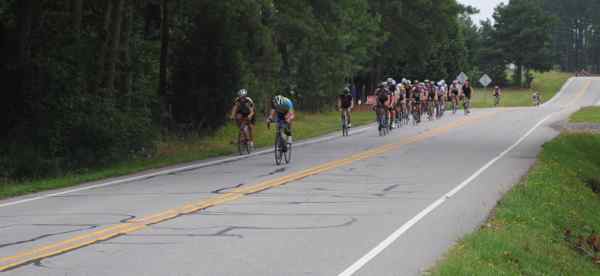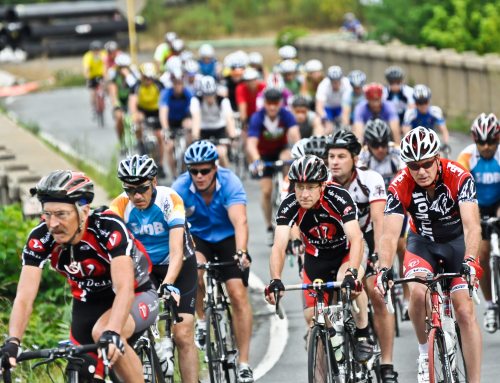By Emily Wegmann, MPT, OCS and Sarah Talley, PT, DPT
Whether you are a novice rider or competitive cyclist, a little saddle soreness is to be expected on the first few rides of the season. It’s a good idea to get a good bike fit, comfortable saddle and the best bike shorts your budget (and ego) will allow. But if that soreness persists or gives way to pain or other symptoms, there may be more to it than tweaking your gear.
If you are experiencing pain in your buttocks or saddle area that won’t go away, you may be developing what is commonly called “cyclist’s syndrome,” clinically known as pudendal neuralgia. Pudendal neuralgia is defined as a shooting, stabbing pain along the course of the pudendal nerve. The pudendal nerve is a peripheral nerve that originates from the sacrum and divides into three different branches that innervate the pelvic floor muscles, rectum and genitals. These nerve branches are vulnerable to compression and stretch forces due to their paths through many soft-tissue, ligament and muscle layers of the pelvis and hips.
Compression and tension on a nerve may lead to nerve irritation, which commonly results in burning, shooting, pain or numbness. Prolonged nerve compression or stretch injuries may lead to chronic changes in the nerve’s ability to function and can result in pain, sensation changes and altered muscular contraction if symptoms are untreated or ignored. Common symptoms associated with pudendal neuralgia include painful sitting, rectal or vaginal burning and fullness, genital numbness, sexual dysfunction and changes in bowel and or bladder frequency, urgency and function. While non-cyclists also experience pudendal neuralgia, cyclists are vulnerable to pudendal nerve irritation as a result of direct saddle pressure. Positioning may also contribute to compressive or stretch forces on the pudendal nerve if the pelvis, hips and spine lack the muscular strength and joint flexibility required to tolerate cycling for a given period of time.
If you suspect that you have cyclist’s syndrome, there is help for you. Due to the complex interaction of pelvic organs, muscles and nerves, you should first schedule an appointment with a gynecologist, urologist or proctologist to rule out infection, prostatitis or other medical conditions. There is often a muscular component of cyclist’s syndrome that may be successfully treated by physical therapists with specialized training in the evaluation and treatment of pelvic muscles. Pelvic physical therapists are trained to perform a detailed pelvic muscle examination in addition to a biomechanical analysis of your movement patterns to determine whether there is a musculoskeletal or nerve source of your symptoms. Treatment incorporates pain education, exercises to retrain the deep muscles of the pelvis, hips and spine, and manual techniques designed to relieve pain and restore muscular balance.
If this sounds like you, don’t delay care. The symptoms of cyclist’s syndrome, or pudendal neuralgia, are best resolved with early diagnosis and treatment.
# # #
Emily Wegmann, MPT, OCS and Sarah Talley, PT, DPT are co-owners of Carolina Pelvic Health Center, Inc. and specialize in treating pelvic pain and weakness in men and women of all fitness levels. Sarah is a Boston qualifier and previous Ramblin’ Rose participant. Curious about pelvic physical therapy? Visit www.carolinapelvichealth.com.







